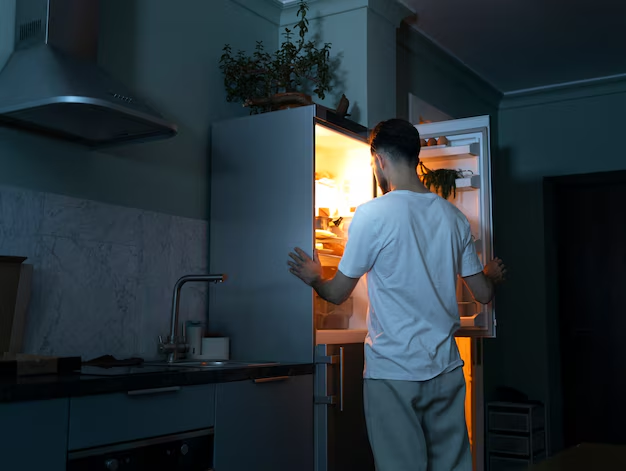Finding the Perfect Chill: How Cold Should Your Refrigerator Be to Keep Food Safe?
Have you ever asked yourself why your refrigerator runs at a specific temperature or pondered the impact of its setting on your food's longevity? Maintaining the correct refrigerator temperature is pivotal not just for keeping food fresh, but also for ensuring it remains safe for consumption. In this engaging and informative article, we’ll delve deep into the ideal refrigerator temperature, explore why it matters, and provide practical tips to help you optimize your fridge settings. Let’s open the door to a well-informed world of cool preservation.
🥶 Why Temperature Matters: Keeping Food Safe
Food spoilage and bacterial growth are natural processes that occur when food items are not stored under appropriate conditions. Bacteria such as E. coli, salmonella, and listeria thrive at warmer temperatures, posing significant health risks. The right refrigeration maintains an environment that inhibits this bacterial growth, prolonging food freshness and safety.
The Science of Cool: Understanding the Temperature Threshold
The general expert consensus advises that your refrigerator's temperature should be set to 40°F (4°C) or below. This temperature slows bacterial growth significantly, making it essential for ensuring your groceries, leftovers, and daily staples remain safe and wholesome.
Refrigerators function by using a refrigerant to absorb warmth from the interior and expel it to the outside, thereby lowering the inside temperature. The key is finding the sweet spot—not too warm to risk spoilage and not so cold that your milk turns to slush.
🛠️ Adjusting and Monitoring: The How-To
Setting the Temperature: Most modern refrigerators come equipped with adjustable thermostats or digital readouts, making it easy to select your desired temperature. Here’s how to make the most of these features:
Check the Manual: Always start by consulting your refrigerator’s manual for specific instructions tailored to your model. Every fridge can have slightly different controls.
Use a Thermometer: For accuracy, place a refrigerator thermometer in the center of the middle shelf. This helps you verify if the built-in display is correct.
Adjust Gradually: When tweaking your settings, adjust the temperature gradually. It may take a few hours for the fridge to stabilize and reach the new setting.
Routine Monitoring: Regularly check the temperature to ensure it remains within a safe range, particularly if you experience frequent power outages or changes in room temperature.
🌡️ The Role of Humidity and Airflow
Humidity Control: Many newer models boast humidity control settings to further enhance food preservation. Crisper drawers, for example, are designed to keep vegetables fresh by adjusting humidity levels—higher for leafy greens and lower for fruits.
Ensuring Proper Airflow: Good airflow within the refrigerator is essential for maintaining a consistent temperature:
- Don't Overstuff: Avoid crowding shelves, as this can hinder air circulation, leading to uneven cooling.
- Place Strategically: Organize food items efficiently—raw meats in the coldest section (often the bottom), and more temperature-sensitive items like dairy near the back where it stays coolest.
🥘 Shelf Safety and Food Placement
It's not just about setting the right temperature; it's also about knowing where to place food items to ensure they remain safe:
- Top Shelf: Use for ready-to-eat items to avoid cross-contamination.
- Middle Shelves: Ideal for drinks and perishable items like leftovers.
- Bottom Shelves: Best for raw meats and seafood, preventing any dripping onto other foods.
- Door Storage: Despite convenience, the door is often the warmest part of the fridge. Store condiments and less temperature-sensitive items here.
🔥 Handling Challenges: Seasonal Variations and Power Outages
Seasonal Adjustments: During summer, your refrigerator might have to work harder to maintain its set temperature due to higher ambient temperatures. A slight adjustment to a colder setting may be necessary. Conversely, in cooler months, reducing your refrigerator's cooling setting can save energy.
Power Outages: In cases of power failure, keep fridge and freezer doors closed as much as possible. Food inside should remain safe for up to four hours in the fridge and up to 48 hours in a full freezer.
Emergency Tips for Power Loss 💡
- Ice Packs: Store a few ice packs in your freezer to help maintain a cooler temperature during an outage.
- Coolers: Have a cooler handy to transfer essential perishables if needed.
- Thermometer Checks: Use a fridge thermometer to monitor the temperature once power resumes to ensure safety.
🍱 a Glance: Quick Reference Guide
To make fridge safety even more accessible, here’s a handy summary list:
- Ideal Temperature: 40°F (4°C) or lower 🥶
- Humidity Settings: Adjust based on produce type 🍏🥕
- Check Temperature Regularly: Use a trusted thermometer 🌡️
- Food Placement: Keep raw meats on lower shelves to avoid cross-contamination 📦
- Door Compartment: Reserve for less perishable items 🚪
Insight and Action: Bringing It All Together
The balance of maintaining the right refrigerator temperature ensures not only the freshness of your food but also the health and safety of those consuming it. By understanding and applying these insights into temperature settings, food placement, and proactive monitoring, you can confidently manage one of your kitchen's most vital appliances. So, next time you pop the refrigerator door open for a midnight snack or stock up after grocery shopping, you'll know exactly how those chilled confines are working to keep your food safe and sound. 🥳
Maximize your refrigerator’s efficiency and safety with these tips, ensuring your meals are as fresh and wholesome as the day they were prepared.
